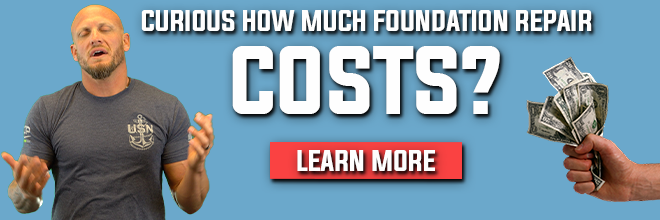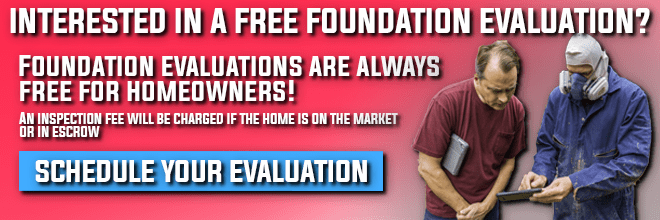Poly doesn’t want a cracker – Poly the Polyurethane Pirate Parrot™ wants to repair cracks, lift/stabilize settled foundations and raise/re-level uneven slabs.
What is Polyurethane Foam?Polyurethane foam is an injectable polyol and isocyanate resin sealant, insulation, grout that expands upon application, providing void fill, structural support, and re-leveling properties. Polyurethane foam is waterproof, flame-retardant, noninvasive, and non-polluting, weighing 3.5 to 5 pounds per square foot and reaching 90% compression strength after 15 minutes. Polyurethane can hold 7,200 pounds per square foot. |
The average price of polyurethane in Southern California and Arizona is $10 per square foot/per pound.
Due to labor costs (and current limited availability – thank you, COVID), many construction contractors have a polyurethane minimum fee.
Here at Dalinghaus Construction Inc., our polyurethane minimum is $2,500 with our standard job averaging out to $2,500-$5,000.
Now, the cost of polyurethane does fluctuate and is contingent on the type of repair project.
Polyurethane is utilized for a variety of applications:
- Void Fill
- Void Fill After Foundation Lift / Stabilization
- General Soil Stabilization (Permeates, Densifies, Stabilizes, & Adds Rigidity)
- Lifting, Re-leveling Flatwork (Driveways, Sidewalks, Pool Decks, & other Trip Hazards)
- Deep Injection (a layered approach to densification from 3 to 7 to 12 feet)
Check out our articles:
- Polyurethane Injection vs Mudjacking (Weight, Application, & Cure Time)
- 5 Steps to Polyurethane Foam Injection (From Drill Holes to Cure)
Fun Facts with Brian – Here at Dalinghaus, we use AP LIFT 430, which is certified by Truesdail Labs to NSF/ANSI 61-5 (approved for contact with drinking water).
In this article, we are going to discuss the price points of poly as it refers to:
- Void Fill
- Deep Injection
- Void Fill after a Foundation Lift/Stabilization
Polyurethane Void Fill Price
Void fill is probably the easiest place to begin. Our $2,500 minimum, when divided by $10 per square foot, translates to 250 square feet of void fill already included in the base price.
So, we take our 2,500 + $10 multiplied by any additional square feet = Total Price
For example, let’s say the void underneath your backyard half-court is 300 square feet. So, we subtract our 250 feet already included in the base price, which leaves us 50 additional square feet.
50 square feet x $10 per square foot = $500
$2,500 (for the minimum 250 square feet) + $500 (for the additional 50 square feet) = $3000
This math is applicable for:
- Void Fill
- General Soil Stabilization
- Lifting and Re-leveling flatwork
*Note – these tend to be shallow voids with relatively easy access.
Where the math gets a bit more complicated is with Polyurethane Deep Injection and Polyurethane Void Fill after a Lift/Stabilization.
Polyurethane Deep Injection Price
Polyurethane Deep Injection Price is more expensive due to the intensive labor and more complicated process. The drilling is deeper and the installation crew is larger.
Polyurethane Deep Injection is priced at $160 per linear foot. The Poly minimum of $2,500 remains the same, buying you a baseline of 15.5 square feet.
Then the same math applies:
$2,500 (for 15.5 square feet) + $160 x additional square feet.
This is a major project and utilized for areas with non-load bearing, expansive soil.
Void Fill After Lift / Stabilization Price
In this particular scenario, it’s not the Poly Cost that is the big line item. It’s everything else. After a home has been lifted to maximum practical recovery, the resulting void needs to be filled.
This cost is the $2,500 minimum + $10 x additional squared foot.
The vast majority of Dalinghaus foundation repair projects never exceed the polyurethane $2,500 minimum.
The primary expenses here are:
Click on the link below to learn just how affordable/manageable Foundation Repair can be:
Dalinghaus Can Install Polyurethane for YOU!
Polyurethane is definitely an inexpensive option for void fill and flatwork lift and considerably cheaper than a full Concrete R&R project.
If you live in Southern California or Central Arizona, click on our link below for a FREE inspection –









One Response
We have serpentine cracks in our concrete garage slab and approach, that are approximately 30′ long and 1+ inches wide. There is very little elevation variance side-to-side. Would epoxy injection be a good repair solution for this condition. MAC